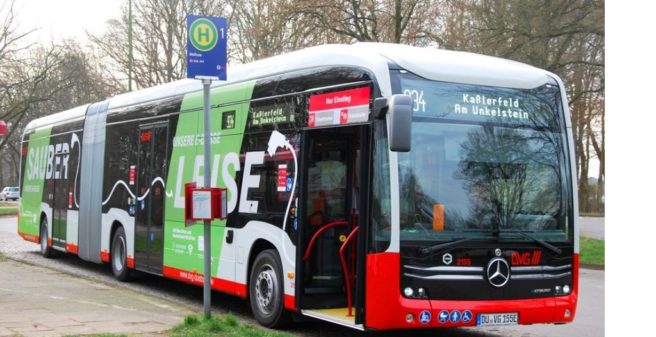
On 23 February 2022, Duisburg’s DVG, the transport company of the fourth-largest city in the Ruhr region (including Düsseldorf), officially took delivery of seven battery-electric articulated buses of the Mercedes-Benz type “eCitaro G”. The buses are numbered 2150 to 2156.
They have been in use on line 934 since 1 March 2022. The line runs from the depot “Am Unkelstein via the port, the main station, Wedau, the “Seenplatte” in the south of Duisburg, the Buchholz S-Bahn station and the hospital to the Großenbaum S-Bahn station. The line runs every 15 minutes during the day from Monday to Saturday. All cars travel from “Am Unkelstein” to the stop “Am See”, from there every second car goes only one stop further to Wolfssee, all others continue their way to the S-Bahn station Großenbaum. On Sundays, line 934 offers a half hour frequency over the full length of the route.
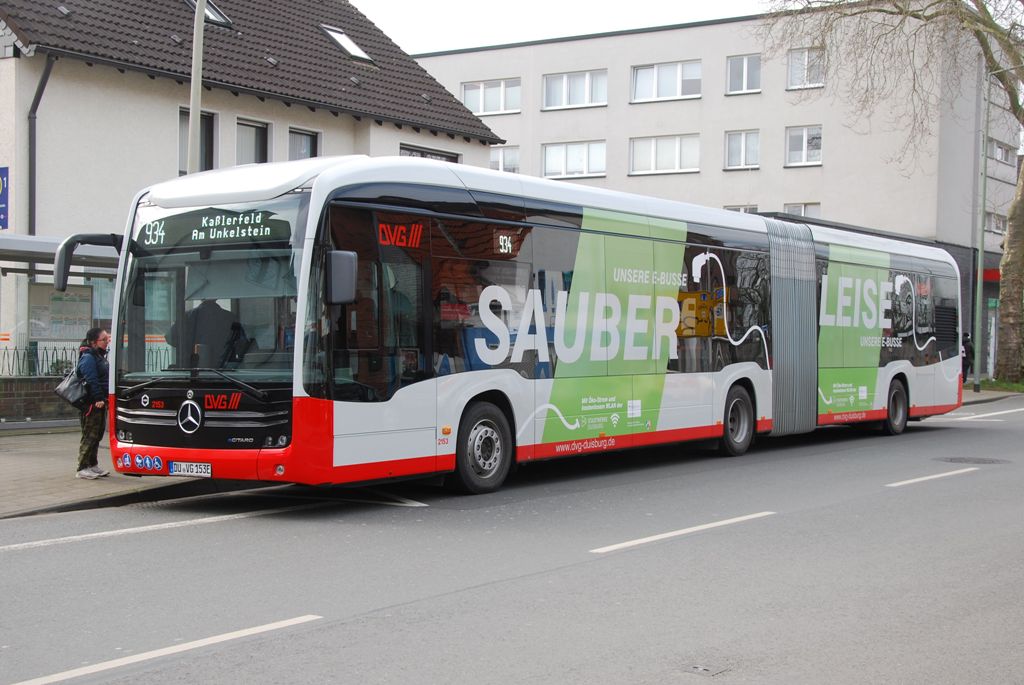

Why line 934?
DVG deliberately chose line 934 for the electric buses. The main reason for this decision is that one of the final stops of the line is the bus depot “Am Unkelstein”. Here the vehicles are recharged overnight anyway, and here they can also be recharged via roof pantograph after each round while in use on the line. For this purpose, there is a “T-mast” here with one charging place on each of its two arms. Two buses with a capacity of 300 kW each can be “refuelled” at the same time at these two fast-charging stations.
From the depot “Am Unkelstein”, line 934 then runs through the city centre and thus through an area where the air is very polluted. Every emission that is not released here is good for the urban environment. This is also true for other areas in the city that are considered particularly polluted and where the new electric buses will immediately improve the air quality noticeably. And finally, the environment of the “Sechs-Seen-Platte” (six-lake plateau) in the south of Duisburg is to be particularly protected in order to preserve it as a local recreation area for Duisburg’s citizens.
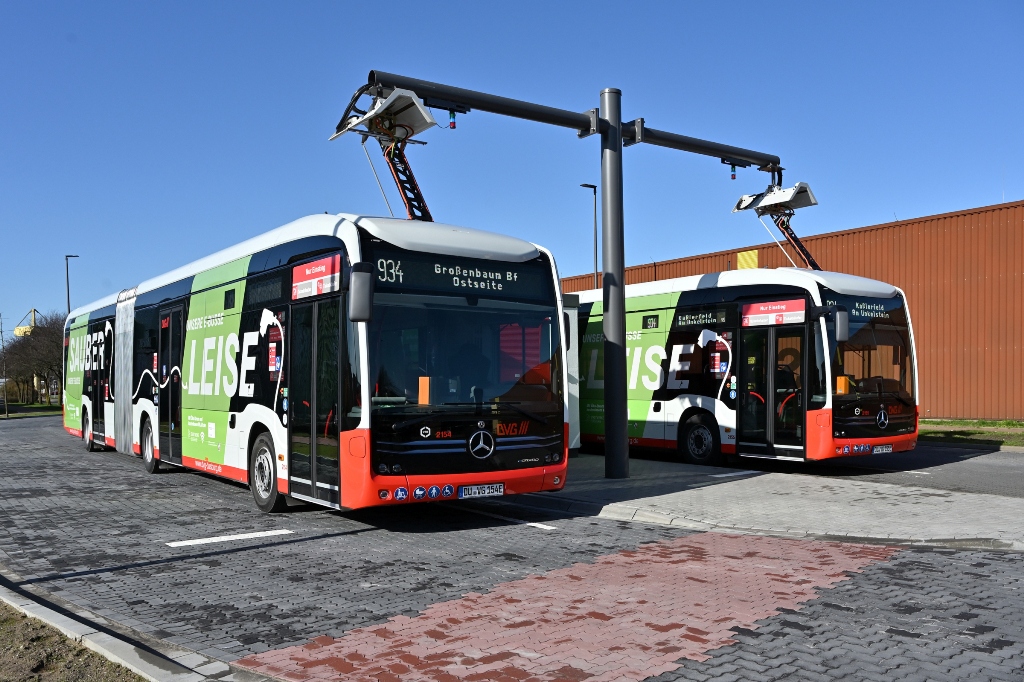
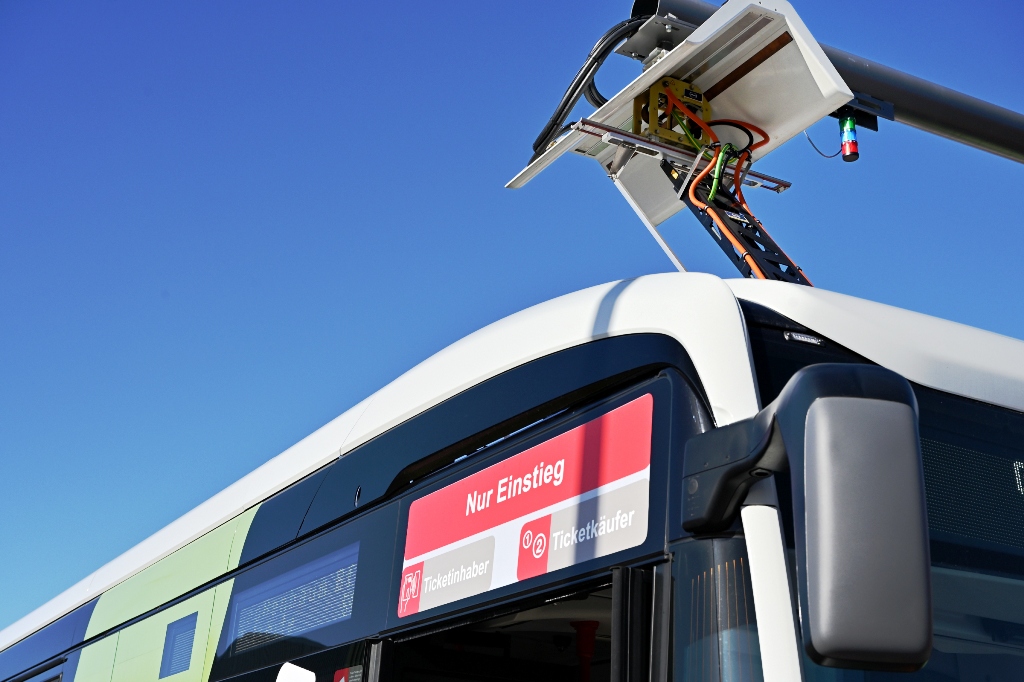
The technology of the Duisburg eCitaro G
The articulated buses are equipped with ten high-voltage batteries, which have a joint capacity of 330 kWh and, as Daimler Truck says, ensure the buses have a “reasonable range”. The batteries belong to the current latest generation of lithium-ion batteries (NMC 2 – lithium-nickel-manganese-cobalt), and compared to previous batteries they are characterised by an increased energy density. They are recharged either via CCS combo plugs or via roof-mounted pantographs, which have found their place on the front of the vehicle and rise from the bus to the charging station.
Daimler Trucks not only supplied the seven buses, but also – at DVG’s request – the necessary infrastructure. Mercedes offers this “complete turnkey solution” to make it easier for transport operators to switch to electric mobility. In Duisburg, for example, the bus manufacturer also supplied seven stationary chargers with contact bonnets in the parking hall, two outdoor charging stations for recharging via pantograph and one mobile charger. Mercedes also planned and projected the charging facilities, installed the necessary power supply infrastructure and had the necessary construction work carried out.
The seven electric articulated buses are three-door vehicles that are fully air-conditioned. Their floors have a wooden design which is becoming more and more common in bus construction. The fabric-covered seats are of the “Mercedes-Benz City Star Function” type. Grab rails and handrails are in the colour “signal red” so that they can also be easily seen by visually impaired passengers. At the doors, the floor is painted yellow. At door 2 there is a special use area on the right and left of the carriage for wheelchairs and prams, whereby the wheelchairs can be secured with belts. There are also folding seats here.
The driver’s seat is air-conditioned independently of the rest of the bus, and the driver can create the atmosphere he or she feels comfortable in. The interior mirror can be adjusted electrically – the driver does not always have to get up, adjust the mirror manually, sit down again, check whether the mirror setting is now correct, get up again … A direct consequence of Corona: the door to the driver’s cab has a separating pane across its entire width.
The Duisburg eCitaro G features the “Preventive Break Assist” braking assistant, the “Sideguard Assist” turning assistant and a reversing camera. And the interior of the cars is monitored with six cameras.
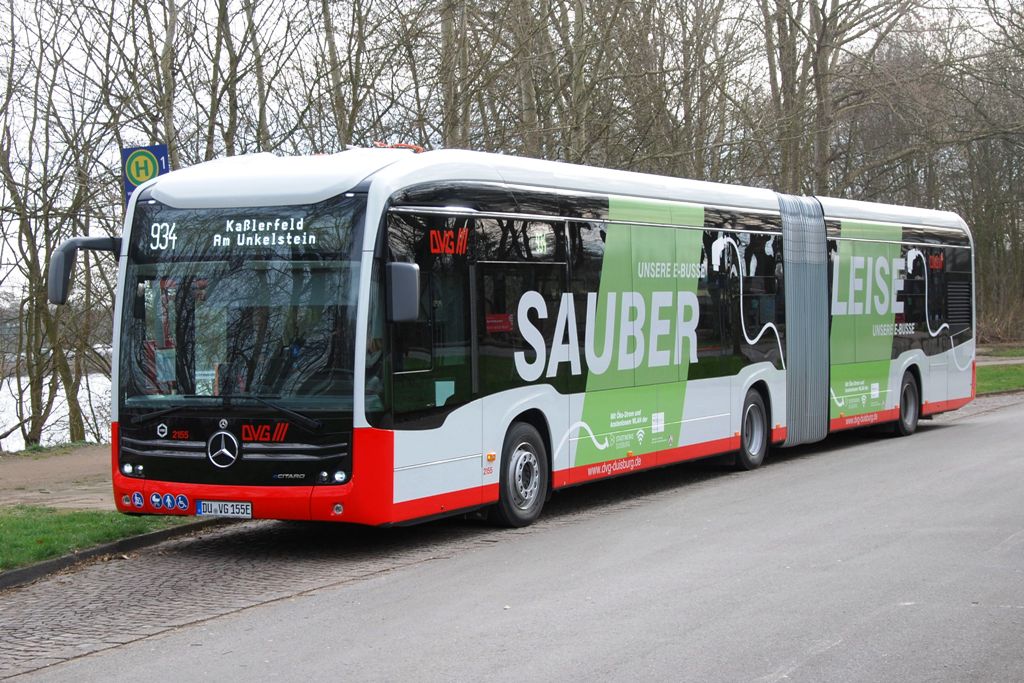
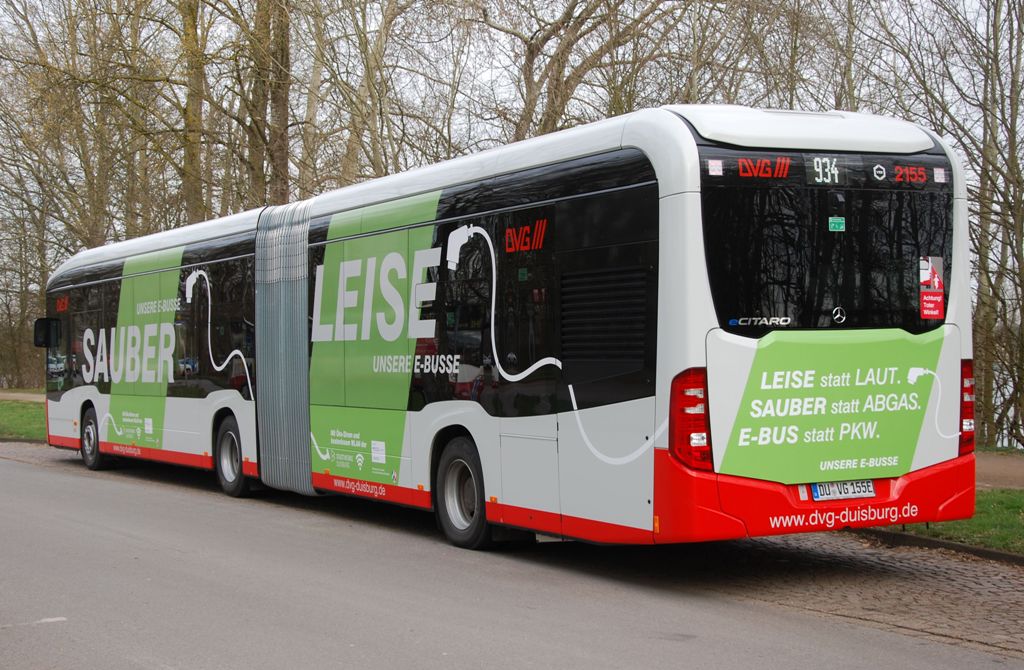
03.03.2022

